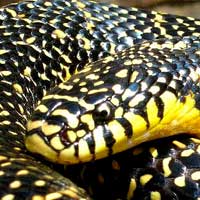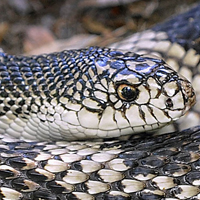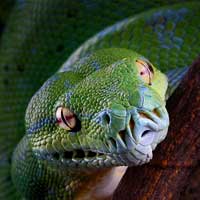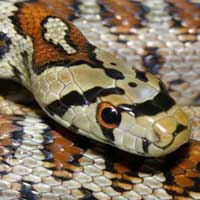Unraveling the Secrets of the Pygmy Python
The scientific name of the Pygmy Python is Antaresia perthensis, and it belongs to the Pythonidae family, which includes non-venomous constricting snakes commonly referred to as pythons.
Scientific Name: Antaresia perthensis
Snake Family: Pythonidae
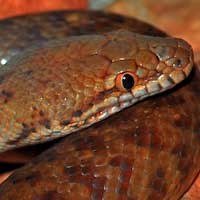
Introduction to the Pygmy Python
The Pygmy Python (Antaresia perthensis) is the smallest python species in the world, native to the arid regions of Western Australia. With its compact size and manageable temperament, this non-venomous python is a favorite among reptile enthusiasts. Despite its diminutive stature, the Pygmy Python exhibits all the intriguing behaviors of larger pythons, making it a fascinating pet for keepers with limited space. This guide provides an in-depth look at the Pygmy Python’s habitat, diet, behavior, health, reproduction, and care needs.
Where Does the Pygmy Python Live?
The Pygmy Python thrives in the arid and rocky environments of Western Australia, adapting to some of the harshest conditions found in the region.
- Geographic Range: Endemic to the Pilbara region of Western Australia.
- Preferred Habitat: Rocky outcrops, grasslands, and arid shrublands.
- Climate: Hot, dry conditions with significant temperature fluctuations between day and night.
| Region | Habitat Type | Key Features |
|---|---|---|
| Pilbara | Rocky Outcrops | Ample shelter, stable microclimates |
| Grasslands | Open spaces | Abundant small prey |
| Arid Shrublands | Shrub cover | Protection from predators |
Diet and Feeding Habits of the Pygmy Python
Despite its small size, the Pygmy Python is an efficient predator that primarily preys on small mammals and reptiles. In captivity, its feeding requirements are straightforward and easy to manage.
- Natural Diet: Small mammals, lizards, and occasionally insects.
- Feeding Frequency:
- Juveniles: Every 5-7 days to support growth.
- Adults: Every 10-14 days depending on size and activity level.
- Captive Feeding Tips:
- Offer pre-killed, appropriately sized mice or pinkies.
- Feed in the evening to align with their nocturnal hunting behavior.
- Avoid overfeeding to prevent obesity.
Behavior and Temperament of the Pygmy Python
The Pygmy Python is known for its calm temperament, making it an excellent choice for both beginners and experienced keepers. Understanding its behavior ensures a stress-free environment for the snake.
- Activity Patterns: Nocturnal, with hunting and movement occurring primarily at night.
- Defensive Behavior: Rarely aggressive, may curl into a ball or hiss if threatened.
- Interaction with Humans: Adapts well to handling when introduced gradually and consistently.
By respecting their natural instincts and handling them gently, you can build a strong bond with your Pygmy Python.
Health and Lifespan of the Pygmy Python
The Pygmy Python can live up to 20 years in captivity with proper care. Regular monitoring and maintaining optimal environmental conditions are essential for their wellbeing.
- Common Health Issues:
- Respiratory infections caused by low humidity or improper temperatures.
- Shedding problems (dysecdysis) due to insufficient humidity.
- Parasite infestations such as mites or ticks.
- Preventive Measures:
- Maintain a temperature gradient with basking spots at 88°F-92°F.
- Keep humidity levels between 40-60%.
- Ensure a clean enclosure and routine health checks.
Reproduction and Breeding of the Pygmy Python
The Pygmy Python is oviparous, laying eggs during the breeding season. Breeding them in captivity requires careful attention to their environmental needs.
- Mating Season: Typically occurs during the cooler months.
- Clutch Size: 5-10 eggs per clutch.
- Incubation Period: 50-60 days at temperatures of 86°F-88°F.
- Breeding Tips:
- Simulate seasonal temperature changes to trigger breeding behavior.
- Provide a nesting box with appropriate substrate for egg-laying.
- Monitor incubation conditions for healthy hatchlings.
Handling and Caring for a Pygmy Python
Handling and caring for a Pygmy Python requires patience and attention to detail. With proper care, these snakes can thrive and become rewarding companions.
- Enclosure Requirements:
- Minimum size: 2’ x 1’ x 1’ for adults.
- Include secure hiding spots and climbing branches.
- Maintain proper ventilation and temperature control.
- Handling Tips:
- Handle gently and support the snake’s body.
- Avoid handling during shedding or immediately after feeding.
- Wash hands before and after handling to maintain hygiene.
By meeting their specific needs, the Pygmy Python can provide years of enjoyment and fascination for its keeper.



